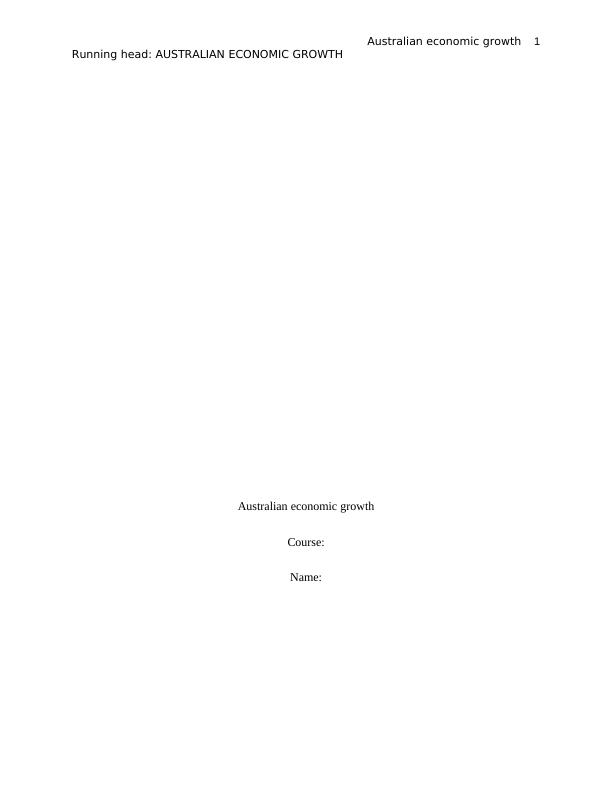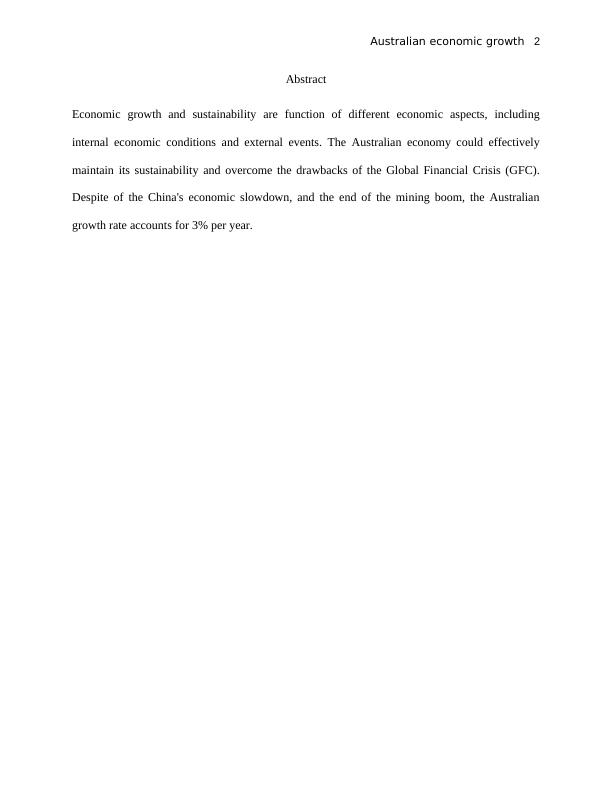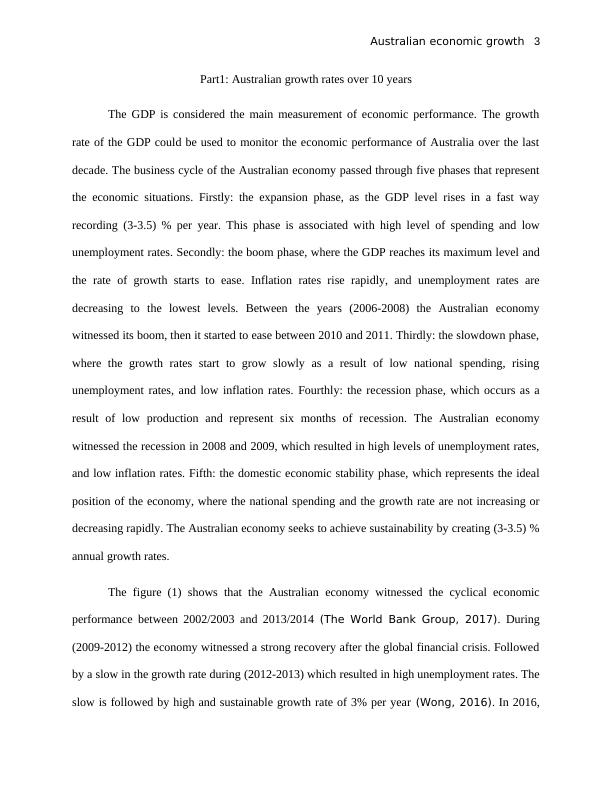Australian Economic Growth
10 Pages2256 Words44 Views
Added on 2020-03-28
Australian Economic Growth
Added on 2020-03-28
ShareRelated Documents
End of preview
Want to access all the pages? Upload your documents or become a member.
Assignment about What are Macroeconomics?
|8
|1982
|11
Economic Principles and Decision Making.
|5
|286
|99
Australia Economic Progress Report
|6
|907
|420
Role of Fiscal Policy in Stabilizing the Australian Economy
|20
|3091
|45
Report on GDP and Economic Growth in Australia
|15
|3182
|80
Challenges Faced by Australian Economy in the Next 12 Months
|10
|2252
|160



